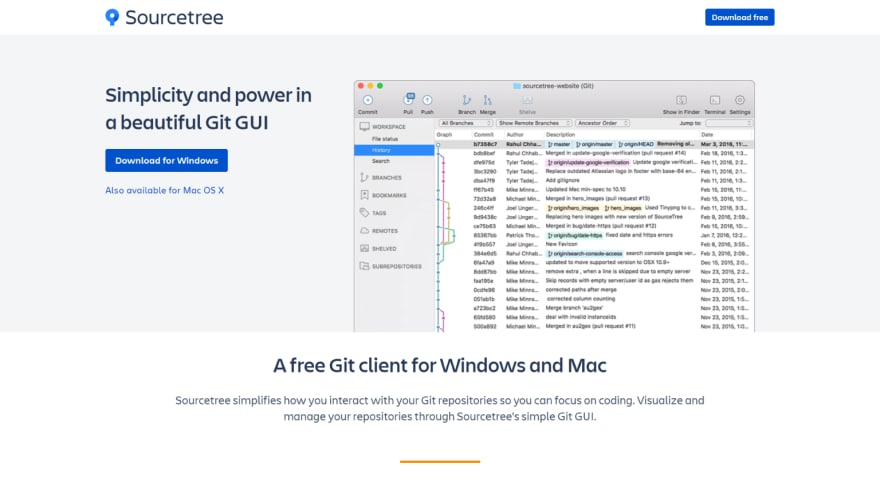

However as soon as my repo grew this fork couldn't keep up. When I first began using GitX (L) my repos were small enough that it ran fine.

It was my client of choice until I discovered one big problem this fork has: it runs very slow with large repos. This is one of the more popular GitX forks available. This version is quite minimal in that regard: you can view your history, stage commits, and commit. To toggle between viewing your history and staging a commit isn't as intuitive as other git GUI clients. Due to the lack of a development cycle the UI has begun to show its age. The last time this version of GitX was updated was on Oct 2nd, 2009. This version is highly stable however it lacks two very important things: features and active development. The first GitX version released was created by pieter on his GitHub account. Here's three of the best forks I know about. Subsequently it has been the source of numerous forks. GitX is one of the most popular open-sourced Git GUI for the Mac.
#GIT CLIENTS FOR MAC MAC#
As I find new git GUIs I will add them to this list, hopefully making a canonical collection of Mac git GUIs.
#GIT CLIENTS FOR MAC FOR MAC OS X#
This article is focused on git GUIs for Mac OS X running 10.5 or greater. This is why a git GUI can put the joy back into using git. Even after you learn a few tricks such as git log -graph -oneline -all it remains difficult to really explore your history. Browsing through your history of commits with git log is not efficient. When you first learn git the CLI can be daunting and confusing. Predominately you interact with git from the command line, inputting commands such as git status or git commit to manipulate your repository. It's lightweight and highly configurable, complimenting almost anyone's programming workflow. You could use branches for each version of the application however using tags makes it so you can't merge into another branch version by accident.Git is one of the most powerful and effective revision control systems available. This will allow you to keep a working copy of the app at all times (ideally anyways) for testing, etc. This way your master branch always stays in a working state and only completed items get added once ready. Once stable they can then be safely merged into master. Be sure to do this from where you want to start working on the feature (typically from master). That creates a new branch named whatever is in and checks it out. This way you can always come back to a specific version at any time by calling git checkout Īnother common practice is to use branches to work on features until they are stable. I would recommend using tags (tag tutorial)įrom your master branch since you are done v1.0 add a tag called v1.0. More than everything: I suggest if you are thinking, you should switch. There is less confusion if the toast does not popup (or keep popping up in case of multiple Toast creation in sequence) long after the app is exited. For an example: Your toast remains on screen even when the activity is finished. To start replacing toasts with Snackbar? (this is a bit opinion based What I like is the swipe off screen feature - would that be a reason
#GIT CLIENTS FOR MAC ANDROID#
Either android as a whole or some background service you may be running. I believe this means that Toasts are to be used if there are some messages pertaining to the system. Information when something important happened between my app and the What is meant by "system messaging"? Does that apply to displaying It is not mandatory to have an action with Snackbar. If I don't require user interaction I would use a toast?


 0 kommentar(er)
0 kommentar(er)
